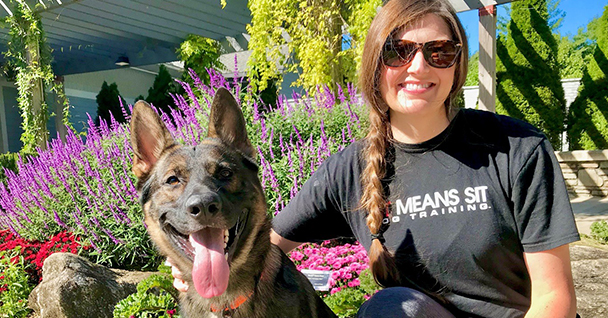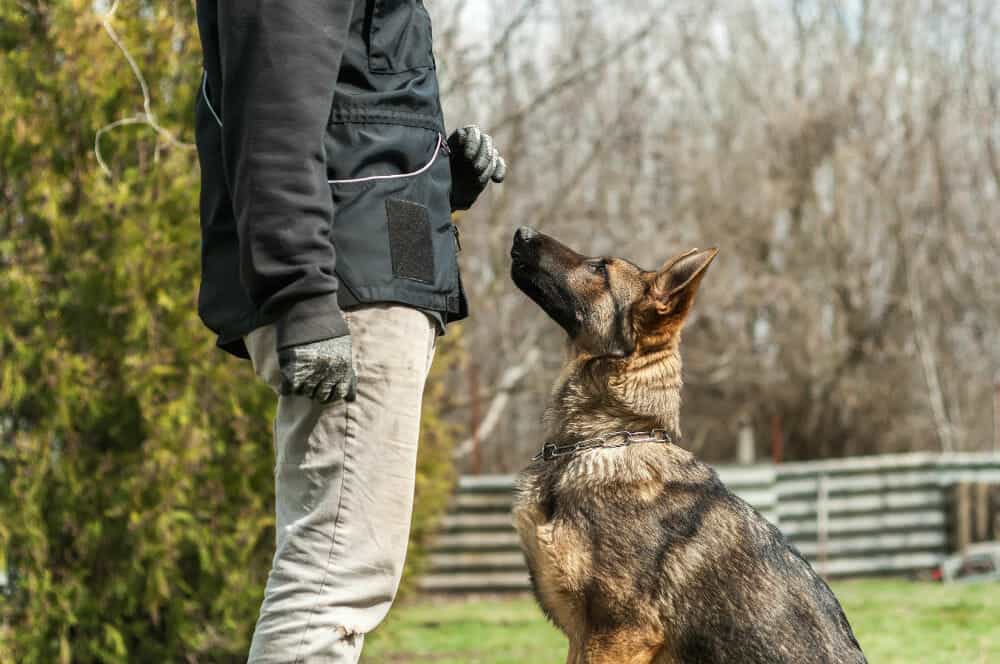Discover the Top Errors to Avoid in Dog Training
Discover the Top Errors to Avoid in Dog Training
Blog Article
Important Tips for Effective Dog Training: An Overview for Pet Owners
Effective dog training is a diverse procedure that requires a calculated method customized to both the animal's temperament and the owner's purposes. Secret parts such as developing consistent commands, utilizing positive support, and helping with very early socialization play crucial duties in fostering a well-adjusted canine companion. Many family pet owners encounter obstacles that can prevent development, leading to stress and uncertainty. Understanding just how to navigate these challenges can dramatically improve the training experience, ultimately changing the partnership between owner and pet dog. What are the vital methods that can be utilized to guarantee success in this undertaking?
Recognizing Dog Actions
Recognizing pet behavior is vital for efficient training and fostering an unified connection between canines and their proprietors. dog training. Pet dogs communicate primarily via body language, articulations, and actions, making it essential for proprietors to analyze these signals precisely.

Socializing plays a significant role in dog actions; exposure to various atmospheres, individuals, and various other animals can substantially affect a dog's personality. Furthermore, aspects such as type attributes and specific temperament ought to lead training approaches, as some breeds might have details behavior traits that demand customized methods. By comprehending these components, owners can create a supportive atmosphere that encourages favorable habits, leading to effective training results and a deeper bond with their animals.
Establishing Consistent Commands
Reliable communication with your canine begins with establishing constant commands. This foundational aspect of training is crucial for cultivating understanding in between you and your pet dog. Uniformity in the commands you make use of ensures that your canine can dependably link specific words or expressions with the desired behaviors.
When choosing commands, pick clear, distinct words that are very easy to set apart and state from each other. Prevent using similar-sounding commands that might perplex your pet. For instance, making use of "sit" and "remain" is ideal, however "rest" and "struck" can lead to misunderstandings.
In addition, preserve the very same tone and quantity for each command. Dogs are sensitive to vocal signs, so varying your tone can produce complication.
It is equally important to make sure that all member of the family are on the very same page pertaining to the commands utilized. A united front in command usage will certainly avoid combined signals and enhance the learning procedure.
Positive Reinforcement Methods
The power of favorable reinforcement in canine training exists in its capacity to motivate wanted habits via incentives and praise. This technique is grounded in the concept that habits followed by positive outcomes are most likely to be duplicated. By integrating favorable support right into your training routine, you can properly form your pet's behavior in a constructive fashion.
To execute positive support, it's necessary to determine what motivates your pet dog, whether it be deals with, playthings, or verbal praise. When your pet performs a wanted action, such as resting on command, right away award them with a reward or love. This organization between the command and the favorable outcome reinforces their understanding.
It's important to timing the incentives correctly; supplying the support within seconds of the desired actions assists your dog make the connection (dog training). Furthermore, uniformity is key-- make sure that all household participants use the exact same commands and benefit systems to prevent confusion

Gradually, you can lower the regularity of treats as your canine discovers the behavior, transitioning to commend or periodic benefits. This approach not only fosters a solid bond in between you and your canine but likewise promotes a check these guys out positive knowing environment, making training a Home Page pleasurable experience for both.
Socialization and Communication
Constantly revealing your dog to a variety of environments, individuals, and other animals is vital for their social growth. Socializing ought to start early, preferably throughout the crucial window of 3 to 14 weeks, when pups are most responsive to new experiences. Older dogs can also profit from ongoing socialization initiatives.
Present your dog to different setups, such as parks, pet-friendly shops, and metropolitan areas. This exposure helps them adapt to different stimuli, reducing anxiousness and worry actions. Urge favorable interactions with other canines and individuals, guaranteeing that these experiences are controlled and secure to promote confidence.
Make use of organized playdates with genteel canines, as this can enhance your canine's social abilities and show them ideal habits. Obedience classes and training sessions additionally supply excellent chances for socializing, allowing your dog to engage with others in a supervised environment.
Monitor your canine's body language during interactions, as this will aid you gauge their convenience level. Progressively raise direct exposure to more tough scenarios while making certain that each experience declares. A well-socialized dog is most likely to display well balanced behavior, making them a delight to have in any type of setting.
Attending To Typical Training Challenges
Every dog owner will come across training challenges eventually, no matter their pet's age or socialization level. Identifying typical concerns such as stubbornness, interruptions, and fearfulness can assist in creating reliable strategies for enhancement.

Slowly introduce diversions as the canine becomes more efficient in commands. weblink Short, constant training sessions are additionally efficient in keeping interest.
Terror can prevent a canine's discovering process. Gradual desensitization to the source of concern, paired with positive reinforcement, can assist alleviate stress and anxiety. Persistence is critical; never require a canine right into a scenario that causes distress, as this might aggravate the issue.
Ultimately, understanding and attending to these common difficulties with an organized strategy will cultivate a more productive training experience, enhancing the bond between canine and owner while promoting effective discovering.
Verdict
In recap, successful pet dog training counts on a thorough understanding of canine behavior, the facility of constant commands, and the application of positive reinforcement techniques. Socializing plays an essential role in developing well-adjusted pet dogs, while attending to typical training difficulties requires perseverance and versatility. By executing these necessary approaches, pet dog owners can cultivate a solid bond with their pet dogs and advertise preferable actions, inevitably leading to an unified relationship in between people and their canine buddies.
Understanding canine habits is vital for reliable training and fostering a harmonious partnership between dogs and their owners.Socializing plays a significant function in pet dog habits; exposure to numerous settings, people, and various other pets can substantially influence a pet's character.The power of favorable reinforcement in pet training exists in its ability to encourage preferred habits through incentives and praise. By integrating positive support into your training program, you can efficiently shape your canine's actions in a constructive manner.
In recap, successful pet training depends on a thorough understanding of canine habits, the establishment of consistent commands, and the application of positive reinforcement techniques.
Report this page